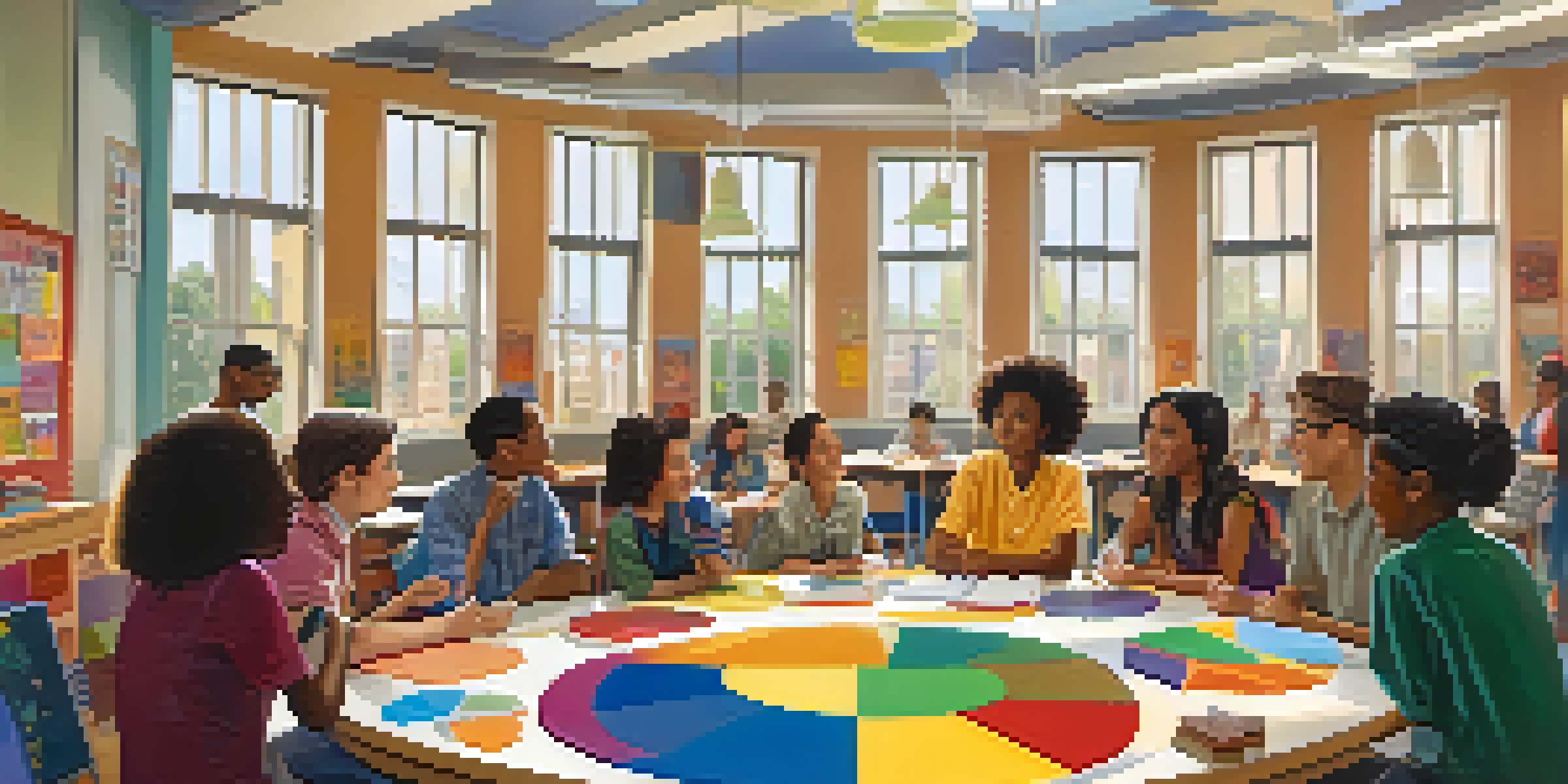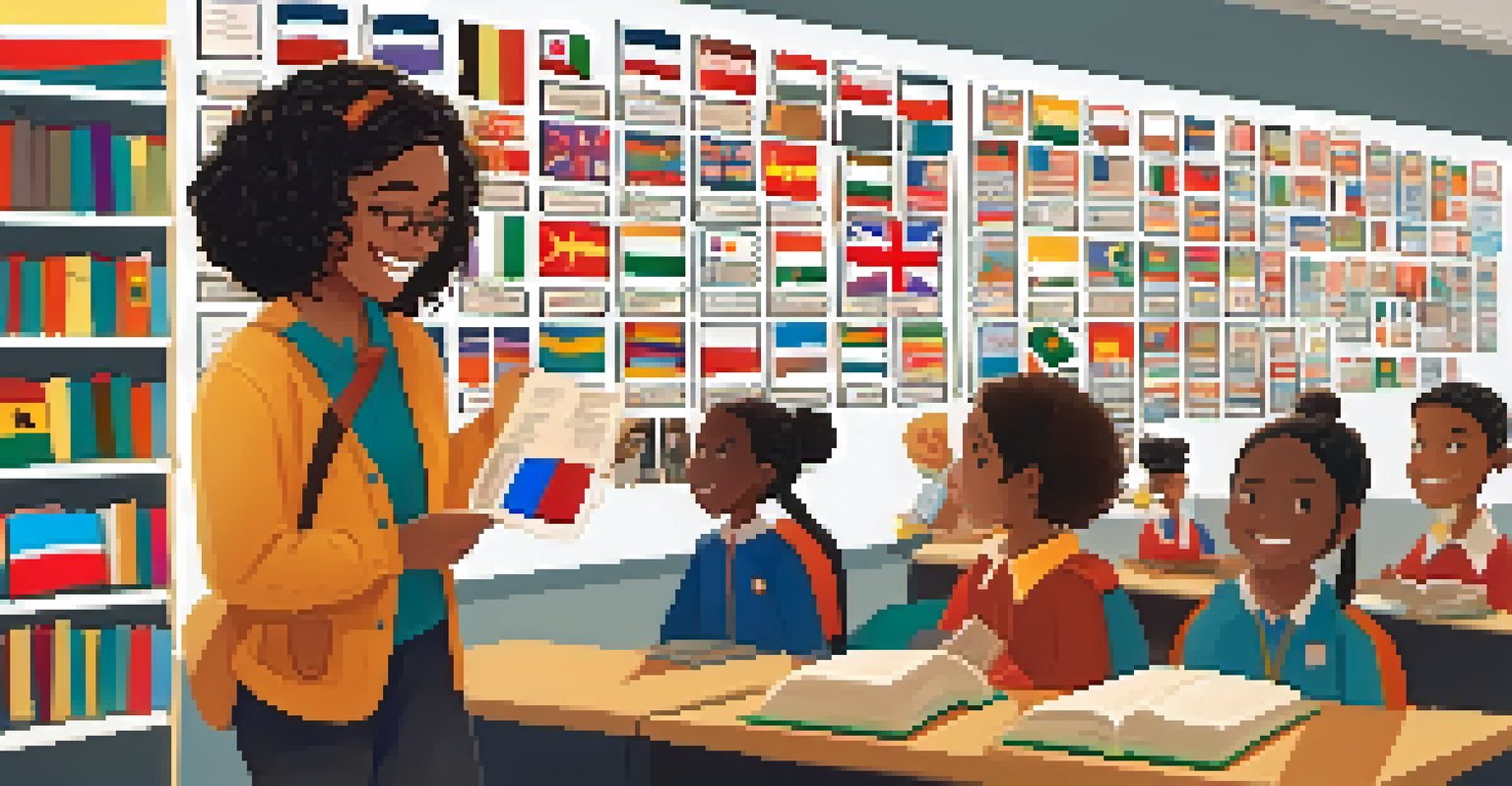Creating Inclusive Classrooms for Culturally Diverse Students

Understanding Culturally Diverse Learning Environments
Culturally diverse classrooms encompass students from various backgrounds, languages, and experiences. Understanding these differences is key to creating an inclusive environment. It's not just about acknowledging diversity but actively embracing it to enrich the learning experience for everyone.
In diversity there is beauty and there is strength.
When educators recognize the unique contributions of each culture, they foster a sense of belonging. For instance, students may feel more engaged when lessons reflect their home cultures or languages. This connection can enhance participation and motivation in class.
Additionally, culturally diverse environments prepare students for a globalized world. By learning alongside peers from different backgrounds, students develop empathy and cultural awareness, essential skills in today’s interconnected society.
The Role of Culturally Relevant Pedagogy
Culturally relevant pedagogy is an approach that connects students' cultural contexts with their learning. It emphasizes the importance of using students' cultural references to make learning more meaningful. This not only validates their identities but also enhances their academic performance.

For example, incorporating literature from diverse authors can resonate with students and promote discussions about their own experiences. By seeing their realities reflected in the curriculum, students feel valued and understood in their educational journey.
Embrace Cultural Diversity
Creating an inclusive environment requires educators to actively embrace and reflect the diverse backgrounds of their students.
Moreover, culturally relevant pedagogy encourages critical thinking and social justice awareness. It inspires students to question societal norms and recognize their role in promoting equity and inclusion both inside and outside the classroom.
Building Strong Relationships with Students and Families
Establishing strong relationships with students and their families is crucial for fostering an inclusive classroom. When educators invest time in understanding students' backgrounds and establishing trust, it creates a supportive learning environment. This connection can significantly enhance student engagement and success.
Education is the most powerful weapon which you can use to change the world.
For instance, hosting family events that celebrate different cultures can strengthen community ties and encourage parental involvement. These gatherings not only showcase diverse traditions but also allow educators to learn from families about their unique needs and expectations.
Furthermore, open lines of communication are essential. Regularly seeking feedback from students and families can help educators adjust their approaches to better serve all learners, ensuring that everyone feels included and respected.
Creating a Culturally Inclusive Curriculum
A culturally inclusive curriculum reflects the diverse backgrounds of all students in the classroom. This means integrating materials and resources that represent various cultures, histories, and perspectives. By doing so, educators can help all students see themselves in what they learn.
For instance, including global history lessons or literature from diverse authors can broaden students' horizons. It sparks curiosity and encourages discussions about different viewpoints, enriching the overall learning experience. Such inclusivity also helps combat stereotypes and promotes a more nuanced understanding of the world.
Build Strong Relationships
Fostering strong connections with students and their families enhances engagement and creates a supportive learning atmosphere.
Additionally, teachers can adapt lesson plans to incorporate students' cultural contexts, making learning more relatable. This approach not only fosters engagement but also empowers students to share their own stories and experiences, further enhancing the classroom dynamic.
Promoting Collaborative Learning Experiences
Collaborative learning experiences can significantly enhance inclusivity in the classroom. When students work together on projects or discussions, they learn to appreciate diverse perspectives and develop essential social skills. This teamwork fosters a sense of community and belonging among students.
For example, group activities that require collaboration can encourage students to share their cultural insights. Such interactions not only enrich the learning process but also help break down social barriers, allowing students to form connections based on mutual respect and understanding.
Moreover, collaborative learning can empower students to take ownership of their education. By engaging in peer-led discussions or group problem-solving, they develop confidence and leadership skills, preparing them for future academic and professional environments.
Addressing Implicit Bias in the Classroom
Implicit bias can unconsciously influence educators' expectations and interactions with students. Recognizing and addressing these biases is crucial for creating an inclusive classroom. This self-awareness helps educators provide equitable opportunities for all students, regardless of their backgrounds.
For instance, training sessions on cultural competency can equip teachers with the tools to identify their own biases. This training encourages reflection on how these biases may affect student engagement and learning outcomes. By actively working to mitigate bias, educators can foster a more equitable learning environment.
Utilize Technology for Inclusion
Leveraging technology can help bridge language barriers and provide personalized learning experiences for culturally diverse students.
Additionally, incorporating diverse voices and perspectives in classroom discussions can help challenge stereotypes. This approach not only promotes critical thinking but also encourages students to question their own beliefs, fostering a more inclusive atmosphere where everyone feels valued.
Utilizing Technology for Inclusive Learning
Technology can play a vital role in creating inclusive classrooms for culturally diverse students. Digital tools and resources can help bridge language barriers and provide personalized learning experiences. This accessibility ensures that all students can engage with the curriculum at their own pace.
For example, language translation apps can assist non-native speakers in understanding lessons more effectively. Similarly, online resources can provide diverse perspectives and materials that resonate with various cultures, enriching the overall learning experience.

Moreover, technology can facilitate collaboration among students from different backgrounds. Virtual discussions and group projects can connect learners across geographical boundaries, promoting inclusivity and understanding in a global context. This not only enhances learning but also prepares students for a diverse world.